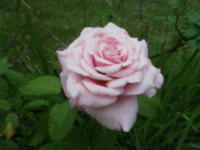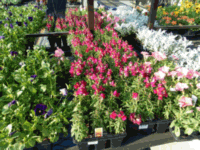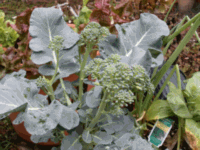
February Gardening Checklist
1.Most spring flowering bulbs should have already been planted by now.
2. Remove old flowers from your cool-season bedding plants to extend blooming and improve flower performance.
3. Plant gladiolus in late February. Prolong the blooming season by planting at two- to three-week intervals for a couple of months.
4. Mulch shrubs and flower beds to get plants off to a good spring start and minimize weed problems.
5. Watch azaleas in February for lacebugs. They cause the foliage to have numerous small white spots and feed underneath lower foliage. Control with horticultural oil sprays or Orthene.
6. A late-winter planting of petunias will provide a good flower show for early spring. Consider the new Wave series.
7. Winter is a great time for planting trees. Some excellent native species for Louisiana include nuttall oak, southern red oak, willow oak, red maple, southern sugar maple, southern magnolia, baldcypress and mayhaw.
8. February is the ideal time to fertilize trees.
9. January and February are good months to prune landscape trees and any deciduous and evergreen plants that don’t flower in the spring.
10. Clean and sharpen tools before you put them away. Wipe the metal blades with an oily cloth that coats them with a thin layer of protective oil to help prevent corrosion. Coat wooden handles with protectants such as a sealer, tung oil or varnish.
11. February is a good time to plant container or bare-root roses. Bare-root rose bushes should be planted by the end of February. Early planting allows rose bushes to become established in their new locations before they begin to bloom. This increases the number and quality of flowers, and the bush is more prepared to deal with summer heat when it arrives in May. Plant roses in sunny, well-prepared beds that have excellent drainage.
12. Look for Louisiana Super Plants at your local nurseries. Louisiana Super Plants are selected for their outstanding performance around the state and are “university tested and industry approved.” This season’s Super Plants include an excellent landscape rose called Belinda’s Dream that produces beautiful, pink, hybrid tea-like flowers on a tough, disease resistant shrub.

Pruning Roses
Roses should be pruned anytime from late January through mid-February.
This pruning is especially important for the popular hybrid tea and grandiflora roses. These roses generally become leggy, less vigorous and unattractive and do not bloom as well if they are not pruned.
All types of roses usually require some pruning each year to control their shape or size. Use sharp bypass hand pruners on roses. Should you need to cut canes larger than one-half inch in diameter, you should use bypass loppers. It’s a good idea to wear a sturdy pair of leather gloves and long sleeves to protect your hands and arms from the thorns.
Hybrid tea and grandiflora roses generally are cut back to about 18 to 24 inches from the ground. Other types of roses that are everblooming (such as China, tea, noisette, Bourbon, polyantha, floribunda, landscape and miniature roses) also may be pruned now. In general, roses in these categories have more pleasing shapes without severe pruning. Unless there is a need to control their size, they are only lightly shaped under most circumstances.
First, prune out any dead or diseased canes. To shape the bushes, you can use hand pruners to selectively cut back individual branches. Landscape roses can be sheared with hedge shears to shape them and encourage full, bushy growth. If some of your bushes are considerably overgrown, they will tolerate severe pruning to get them back into shape.
As a rule of thumb, other than hybrid teas and grandifloras, roses are cut back about one-third to one-half their height, depending on the situation. Long, especially vigorous shoots that have grown well beyond the rest of the bush and make it look out of balance may be cut back further than the rest of the bush. Young bushes planted within the last year or two likely will not need drastic pruning but may be cut back slightly to encourage a full, bushy plant.
It is easier for you and healthier for the rose bush if you prune at least once a year. It is very difficult to properly prune a rose bush that has been allowed to grow for several years without pruning. Don’t forget that we also do a second, but not as severe, pruning on everblooming roses in late summer– around late August.

Flowers
Late winter also is a good time to plant cool-season bedding plants. Planted in late January or early February, they will produce lots of colorful flowers for your spring gardens. The display will be far more attractive and last longer than plantings of cool-season bedding plants done in April. Really, by the time we hit late March and April, it’s time to begin focusing on warm-season bedding plants.
Trees and Shrubs
Trees and shrubs planted in winter have more time to settle in and make root growth before the intense heat of summer begins to stress them, so they have a real advantage over trees planted later. In addition, selecting a tree for your landscape is a serious decision that requires careful and thoughtful consideration on what tree would be the best choice. You don’t want to make a mistake and plant a tree with characteristics that become problems in future years.
Winter Lawn
Winter is an excellent time to collect soil samples and submit them for analysis. Samples should be a composite of soil taken from about 3 to 4 inches deep at various places around the lawn.
To get your sample tested, bring about 1 pint of soil to your parish’s LSU AgCenter Extension Service office or a participating garden center. Make sure to specify the type of grass you are growing on the soil test form. Soil samples submitted to the LSU AgCenter cost only $10, and they provide a wealth of information concerning the overall fertility of your soil.
If results of the soil test indicate the soil pH is too acidic, lime will be prescribed in the soil test recommendations. Winter is the best time to apply lime so it can be fully activated by the following spring. The correct soil pH is extremely important and has everything to do with nutrient availability to your lawn’s roots and to fertilizer performance.
Postpone any permanent warm-season turfgrass establishment from seed until next spring. Sod, such as St. Augustine and centipede grasses, can be laid during winter, if necessary, but remember to keep it moist to prevent it from drying out and dying. Establishment is easiest when delayed until the middle of spring, well after spring green-up.
Lawns may show signs of green-up in southern Louisiana in late February. Do not push turfgrass growth with fertilizer at that time. Fertilizer applied too early will feed winter weeds and will result in lush turfgrass growth that is more susceptible to injury from late frosts or brown patch. Lawns may be fertilized in the New Orleans area about mid-April.

Vegetables
You can plant cool-season vegetables, such as beets, broccoli, cabbage, carrots, cauliflower, Swiss chard, collards, lettuce, mustard, potatoes, radishes, spinach, snow peas and turnips early in February. Plant seeds of tomatoes, peppers and eggplants in greenhouses or under lights indoors.
submitted by Karen Blackburn
